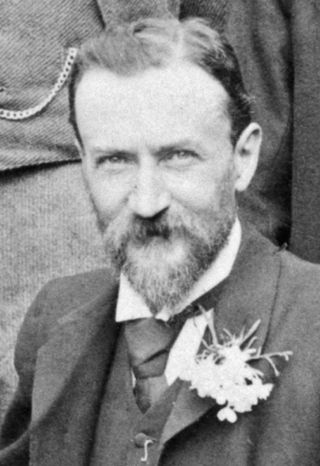
Lepidoptera or lepidopterans is an order of winged insects that includes butterflies and moths. About 180,000 species of the Lepidoptera have been described, representing 10% of the total described species of living organisms, making it the second largest insect order with 126 families and 46 superfamilies. and one of the most widespread and widely recognizable insect orders in the world.

Moths are a group of insects that includes all members of the order Lepidoptera that are not butterflies. They were previously classified as suborder Heterocera, but the group is paraphyletic with respect to butterflies and neither subordinate taxon is used in modern classifications. Moths make up the vast majority of the order. There are approximately 160,000 species of moth, many of which have yet to be described. Most species of moth are nocturnal, although there are also crepuscular and diurnal species.

The Noctuidae, commonly known as owlet moths, cutworms or armyworms, are a family of moths. They are considered the most controversial family in the superfamily Noctuoidea because many of the clades are constantly changing, along with the other families of the Noctuoidea. It was considered the largest family in Lepidoptera for a long time, but after regrouping Lymantriinae, Catocalinae and Calpinae within the family Erebidae, the latter holds this title now. Currently, Noctuidae is the second largest family in Noctuoidea, with about 1,089 genera and 11,772 species. This classification is still contingent, as more changes continue to appear between Noctuidae and Erebidae.

The Arctiinae are a large and diverse subfamily of moths with around 11,000 species found all over the world, including 6,000 neotropical species. This subfamily includes the groups commonly known as tiger moths, which usually have bright colours, footmen, which are usually much drabber, lichen moths, and wasp moths. Many species have "hairy" caterpillars that are popularly known as woolly bears or woolly worms. The scientific name Arctiinae refers to this hairiness. Some species within the Arctiinae have the word "tussock"' in their common names because they have been misidentified as members of the Lymantriinae subfamily based on the characteristics of the larvae.

The Ditrysia are a natural group or clade of insects in the lepidopteran order containing both butterflies and moths. They are so named because the female has two distinct sexual openings: one for mating, and the other for laying eggs.
Sir George Francis Hampson, 10th Baronet was an English entomologist.
Coelolepida is a clade of insects in the lepidopteran order, containing the infraorders Acanthoctesia, Lophocoronina, Neopseustina, Exoporia and Heteroneura, with the latter three grouped in clade Myoglossata.

Arthur Gardiner Butler F.L.S., F.Z.S. was an English entomologist, arachnologist and ornithologist. He worked at the British Museum on the taxonomy of birds, insects, and spiders.

Amphiesmenoptera is an insect superorder, established by S. G. Kiriakoff, but often credited to Willi Hennig in his revision of insect taxonomy for two sister orders: Lepidoptera and Trichoptera (caddisflies). In 2017, a third fossil order was added to the group, the Tarachoptera.
Myoglossata is a clade within suborder Glossata within order Lepidoptera, the butterflies and moths. It contains the family Neopseustidae and the clade Neolepidoptera. Myoglossata is considered a clade, that is, a group of organisms made up of a single common ancestor and all of its descendants. They are distinguished by "intrinsic mouthparts". These added intrinsic galeal muscles are unique to the Myoglossata and developed after the galeae changed to form sucking parts.
Litobrenthia angustipunctata is a moth of the family Choreutidae. It is known from Hunan, China.
Litobrenthia is a genus of moths in the family Choreutidae.
The Global Lepidoptera Names Index (LepIndex) is a searchable database maintained by the Department of Entomology at the Natural History Museum, London. It is based on card indices and scanned journals, nomenclatural catalogues and the Zoological Record. It contains most of world's Lepidoptera names published until 1981 and for some groups is up to date. As of May 2023, the site reads "Database last updated January 2018" so the current validity of the taxonomic combinations presented should be adopted with caution.
Alexey Nikolaievich Diakonoff, also transliterated as Alexej Nikolajewitsch Diakonoff, was a Russian–Dutch entomologist who specialised in Microlepidoptera.
Litobrenthia grammodes is a moth in the family Choreutidae. It was described by Alexey Diakonoff in 1979. It is found in Taiwan.
Litobrenthia japonica is a moth in the family Choreutidae. It was described by Syuti Issiki in 1931. It is found in Japan and China (Zhejiang).
Litobrenthia luminifera is a moth in the family Choreutidae. It was described by Edward Meyrick in 1912. It is found in Assam, India.
Litobrenthia stephanephora is a moth in the family Choreutidae. It was described by Alexey Diakonoff in 1979. It is found in Taiwan.

Eulepidoptera is a division of lepidopterans in the infraorder Heteroneura.






